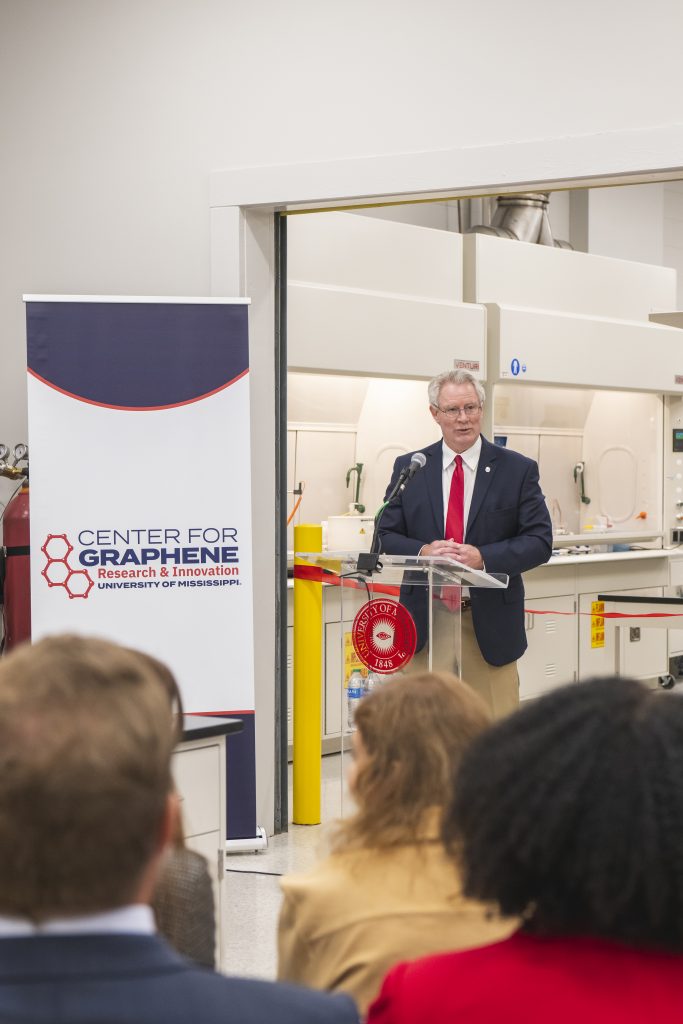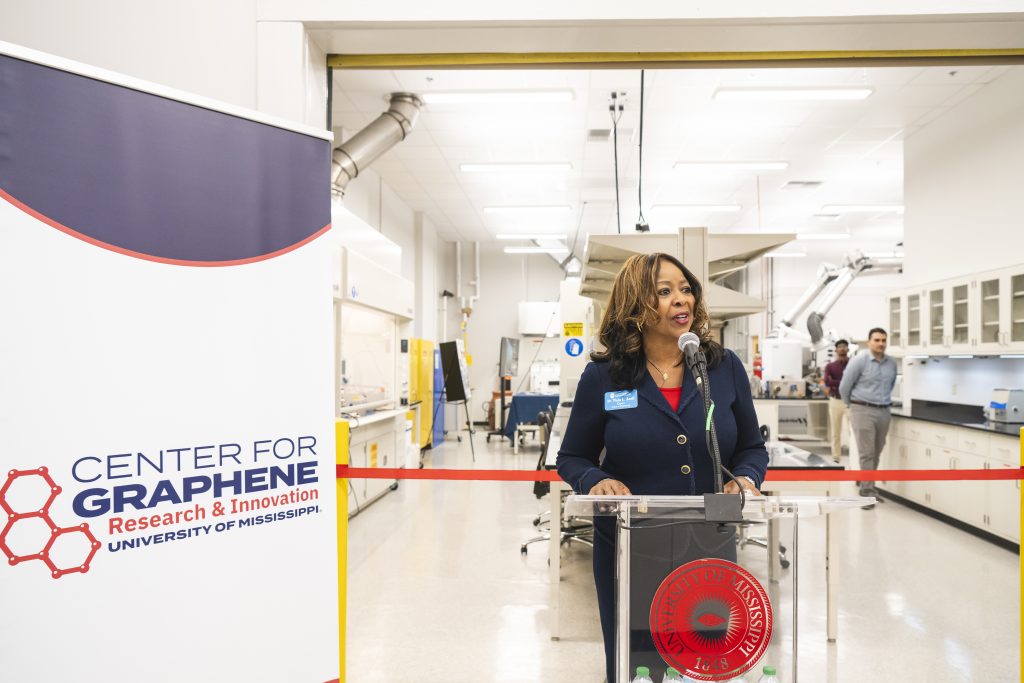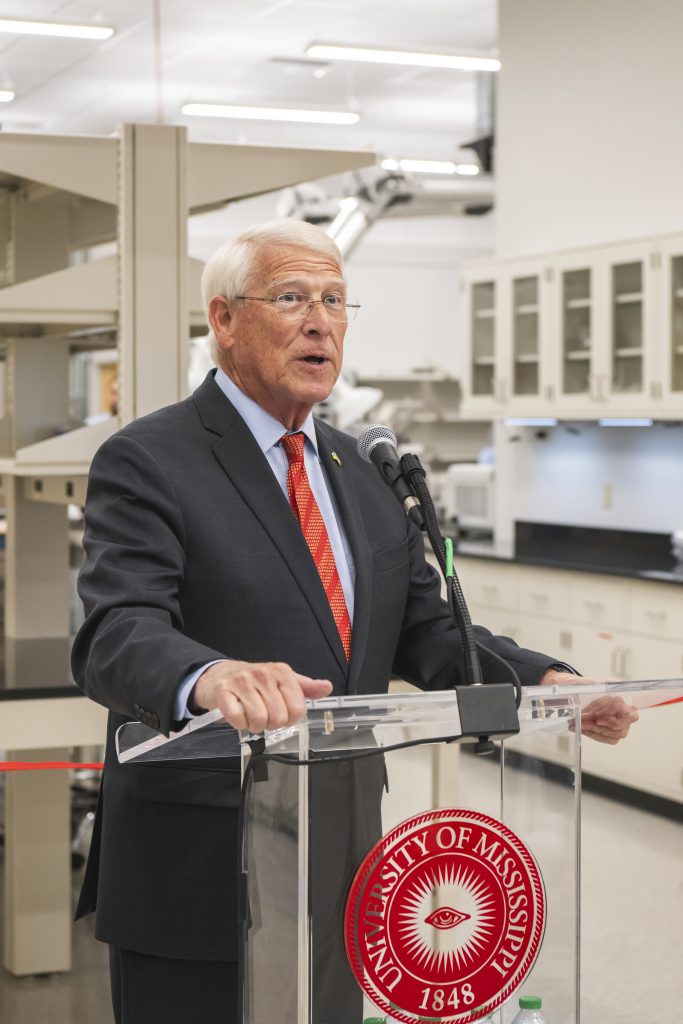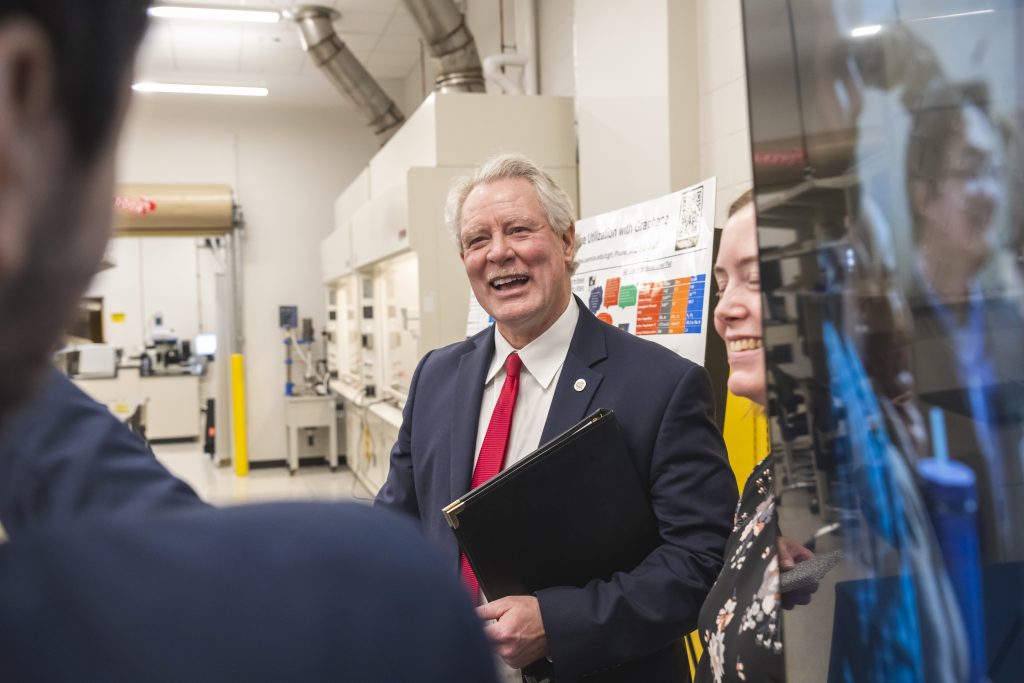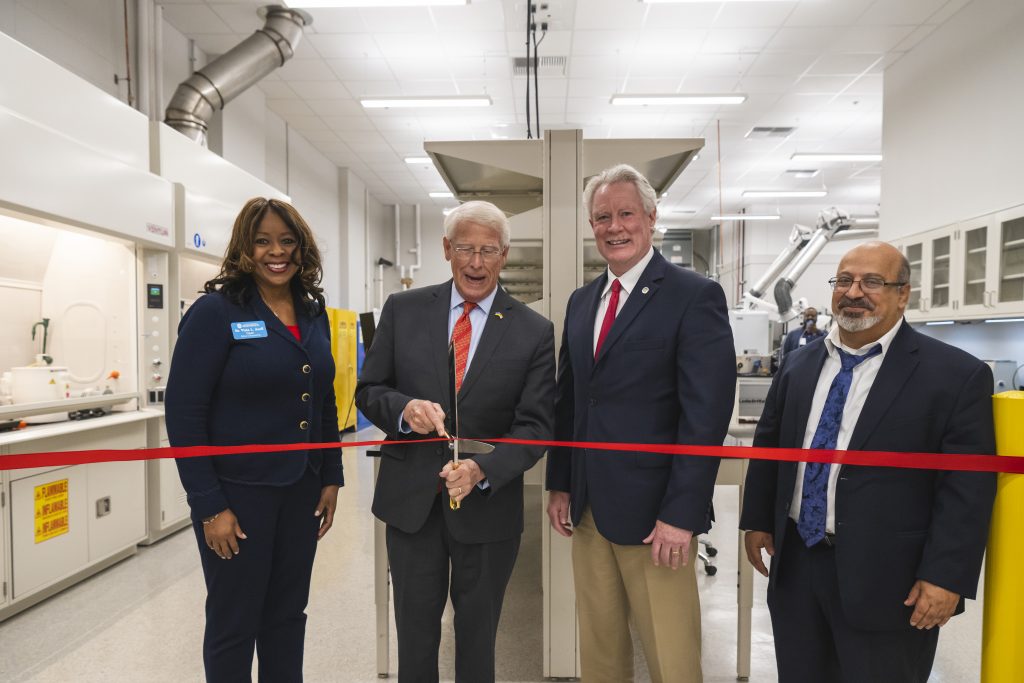
U.S. Sen. Roger Wicker (second from left) cuts the ribbon on the University of Mississippi's Center for Graphene Research and Innovation, accompanied by (from left) Viola Acoff, dean of the School of Engineering; Chancellor Glenn Boyce; and Ahmed Al-Ostaz, the center's director. Photo by Srijita Chattopadhyay/Ole Miss Digital Imaging Services
New space outfitted with state-of-the-art equipment, labs
The University of Mississippi christened a new space for the Center for Graphene Research and Innovation on Friday, October 18, 2024.
Housed in the Jackson Avenue Center, the new space allows the center to expand its thriving research into uses and applications of graphene and other nanomaterials.
“The establishment of CGRI came at a pivotal moment in our university’s growth, not long after we achieved R1 status,” Chancellor Glenn Boyce said. “Our expertise in this groundbreaking field positions the University of Mississippi at the forefront of innovation.
“CGRI is a jewel in the crown of our research enterprise and serves as a model of successful collaboration for other institutions and agencies.”
Graphene, a form of carbon made of a single layer of atoms, is just one of the many nanomaterials that the center focuses on, Ahmed Al-Ostaz said. Nanomaterials are materials that have at least one dimension measuring between 1 and 100 nanometers, or about one thousand times smaller than the width of a human hair.
The Center for Graphene Research and Innovation was founded in 2017. It serves as a bridge between university research and industrial applications of nanomaterials.
The center has developed numerous military and civilian applications for nanomaterials, such as water filtration systems, body armor, semiconductors and construction materials.
The center has ongoing partnerships with multiple universities, government agencies and industry leaders, including Jackson State University, the University of Southern Mississippi, and U.S. Army Engineer Research and Development Center.
“Certainly, your attendance today is an indication of the vital role this center will play in keeping Americans safe,” U.S. Sen. Roger Wicker said. “We’re going to make asphalt stronger with graphene, and we’re going to do it right here. We’re going to make concrete stronger and we’re going to make life easier for our service members.
“I am thankful for everyone who has gone before us. Let’s take it from here and dedicate something today that will be remembered for generation after generation.”
The new space will allow the center to continue its mission of discovering and using nanomaterials such as graphene in a variety of industries, said Ahmed Al-Ostaz, the center’s director.
“We started with the expertise of a few people who realized the importance of working with graphene and other nanomaterials,” he said. “With the support of the university, we were able to equip our new space with state-of-the-art equipment that you’ll not find in many universities in the region.
“What we hope to do is to create a hub where people who want to work on graphene or on any of those frontier materials can think, ‘We need to go to the state of Mississippi.'”
The market for nanomaterials has grown exponentially in the last decade. In 2023, the market was valued at $21.8, with an expectation to rise to $93.9 billion by 2032.
Having a center dedicated to nanomaterial discovery, research and application will draw industries to the state and region, Al-Ostaz said.
“The center will be dedicated to multidisciplinary research,” he said. “It will benefit the region in terms of economic development, and it will be a good showcase for research that will inspire high school students to, hopefully, become engineers.”
Although the science behind nanomaterials may be complicated, their uses should be of interest to everyone, he said.
“The purification of drinking water? That’s important to everybody,” Al-Ostaz said. “Support of our combat forces? Improved infrastructure? Semiconductors? It’s of interest to everybody.
“We have this unique facility in our home state, at our university, and we’re working on issues that affect everyone. That’s something that we are proud of.”
By Clara Turnage

